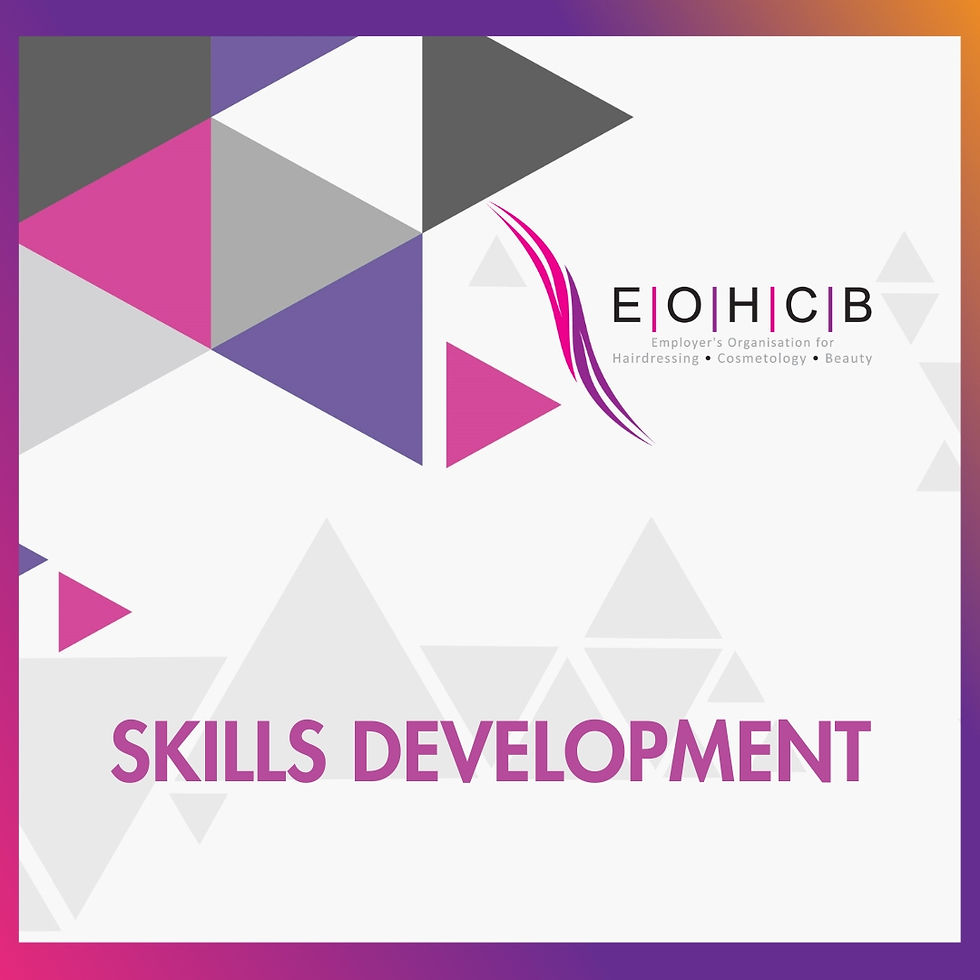
Understanding the Differences Between Short Skills Development and Learnership Programmes in the Hairdressing and Beauty Industry: A Guide for Employers
In the competitive hairdressing and beauty industry, staying ahead of trends and maintaining high service standards is crucial. For employers, investing in staff development through training is key to achieving these goals. Two primary avenues for enhancing employee skills are short skills development courses and occupational learnership programmes.
Understanding the differences between these options and selecting the right one can significantly impact your business's success.
Short Courses: Quick and Flexible Skill Enhancement
Duration and Focus: Short courses are brief, typically lasting from a few days to a few weeks, focusing on specific skills or knowledge areas, such as advanced hair-cutting techniques or specialised beauty treatments. They are ideal for addressing immediate training needs or filling specific skill gaps within your team.
Flexibility: One of the main advantages of short courses is their flexibility. Employers can choose courses that align with current business needs or employee interests, ensuring that the training is relevant and immediately applicable. These courses can be delivered online, in person, or through a combination of both.
Certification: Participants receive a certificate of completion, which enhances employability and provides a mark of professional development. While this certification may not equate to a formal qualification, it still adds value by demonstrating the skills and knowledge gained.
Benefits for Employers:
Quick Skill Enhancement: Short courses allow for the rapid up-skilling of staff, leading to immediate improvements in service quality and customer satisfaction.
Cost-Effective: These courses are generally less expensive and require less time away from work, making them a cost-effective way to enhance employee skills without disrupting business operations.
Employee Motivation: Offering short courses can boost morale and motivation, as employees feel valued and supported in their professional development.
Learnership Programmes: Comprehensive and Structured Training
Duration and Structure: Learnership programmes are more extensive, typically lasting between 12 and 24 months. Unlike short courses, learnerships combine theoretical learning with practical, on-the-job training. This holistic approach ensures that employees gain a deep understanding of their occupation, from foundational knowledge to advanced skills.
Qualification: Successful completion of a learnership leads to a nationally recognised qualification registered with the South African Qualifications Authority (SAQA). This not only enhances the employee’s professional standing but also adds credibility to your business.
Benefits for Employers:
Comprehensive Training: Learnerships provide thorough training that covers both theory and practice, ensuring employees are well-rounded and highly skilled.
Formal Qualifications: The qualifications gained through learnerships are nationally recognised, which can elevate the reputation of your business and build trust with clients.
Retention and Loyalty: Investing in a learnership programme can increase employee retention and loyalty, demonstrating your commitment to their long-term development.
Incentives and Grants: Employers participating in learnership programmes may be eligible for financial incentives and grants from Sector Education and Training Authorities (SETAs), which can offset training costs.
Choosing the Right Training Programme:
1. Assess Business Needs and Goals: Identify specific areas where your team needs improvement. This will help you decide whether short courses or learnerships are more appropriate. Set objectives, such as improving customer satisfaction, increasing service offerings, or enhancing employee retention.
2. Consult with Industry Bodies and Authorities: Engage with the QCTO to understand the accreditation process and the standards required for occupational qualifications. The QCTO provides a database of accredited skills programmes, which includes details about various providers, particularly for the hairdressing and beauty industry. You can explore the QCTO Skills Programmes page for more information.
3. Explore Training Providers: Look for accredited training providers that offer short courses and learnerships in hairdressing and beauty. Seek recommendations from industry associations or peers who have successfully implemented training programmes.
4. Apply for Funding and Incentives: Utilise the skills development levies you pay to access funding for training programmes through the Services SETA. Apply for grants and incentives offered by SETAs to support the cost of learnership programmes.
Making Informed Decisions for Business Growth
Both short skills development courses and occupational learnership programmes offer valuable opportunities to elevate your team’s capabilities and enhance your business’s success. By carefully assessing your business needs, consulting with industry bodies, and exploring available options, you can choose the training path that best supports your business’s growth and your employees’ professional development in the competitive hairdressing and beauty industry.
